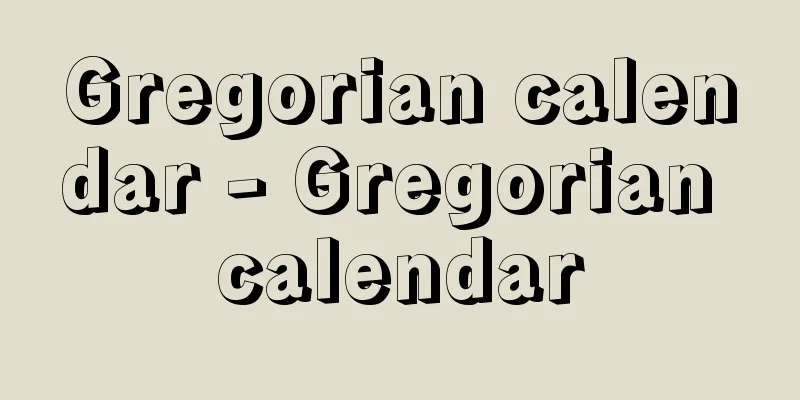Ticket - joshaken (English)

|
A ticket used for public transport such as trains and buses to show that a contract for transportation has been concluded between a passenger and a carrier. In the case of airplanes, it is called an airline ticket, and in the case of ships, it is called a boarding ticket, but here we will discuss train tickets. The legal basis for passenger tickets is the Railway Transportation Regulations, which were issued as a Ministry of Railways ordinance in 1942 and are still in force today, but detailed definitions and rules for operation are left to the rules of each carrier. JR companies define passenger tickets and fare tickets (described below) as "passenger tickets" in their passenger business regulations. In general, a transportation contract is concluded when a passenger pays the specified fare and the carrier issues a passenger ticket. In principle, the contract details such as the validity area, expiration date, fare and fee amount, and issue date are displayed on the piece of paper, and the holder has the right to board. Passenger tickets are considered to be securities and can be transferred, but there are some that cannot be transferred, such as registered commuter passes. In addition, some operators use multi-ride tickets that only show the amount, and the section and period are only identified when the passenger boards and disembarks, so they are not subject to the above principle. Some believe that these are tickets that only prove that the fare has been paid in advance, and do not express the right to board. Magnetic cards and IC cards used in the stored fare system, which has become popular since the 1990s and in which fares are deducted at the ticket gate, also have similar properties. [Takashima Shuichi] historyRailway tickets originated in England, where they were first issued by the Liverpool and Manchester Railway, which opened in 1830. In the early days, handwritten tickets modeled after stagecoach waybills and metal tokens (substitute coins) were used, but the simplification of issuing tickets became an issue in order to handle a large number of different types of transport. In 1837, Thomas Edmonson (1792-1851) of the Newcastle and Carlisle Railway devised a method of stamp printing on cardboard and assigning serial numbers to tickets to manage sales, which he later developed into a system that combined movable type printing, date stamping machines, ticket racks, etc. This method spread to England and France, and then to the rest of the world. The ticket size standard he adopted, 30.3 mm x 57.5 mm, is called the Edmonson system, and this standard was adopted in Japan when the railway opened in 1872 (Meiji 5), and became the mainstream. The official name of the ticket was "Tegata" (a bill of exchange) based on the "Railway Regulations" (1872), the first regulations for railway operations in Japan, but it was also commonly called "Board ticket" or "Stamp". In the "Railway Bureau Transportation Department Work Regulations" and "Railway Bureau Steam Transportation Regulations" enacted in 1873, it was called "Stamp" or "Boarding stamp", while in the 1883 timetable it was called "Ticket". The name "Board ticket" was first used in the "Commuter Ticket Issuance Regulations" enacted in 1886. In 1920 (Taisho 9), the previous regulations were systematized and the "National Railway Passenger and Baggage Transportation Regulations" and "Detailed Transportation Handling Regulations" were enacted, which specified the types and formats of tickets in detail, and these were passed on to the passenger business regulations of the Japanese National Railways (JNR) and each JR company after World War II, with some revisions. Furthermore, from 1955 to 1998, excursion tickets were sold according to separate regulations, and various types of discount tickets were sold as special promotional tickets, leading to a greater diversity of tickets. [Takashima Shuichi] Ticket typesIn accordance with their "Passenger Service Regulations," JR companies define the following passenger tickets and fare tickets as "passenger tickets." (1) Tickets A. Regular tickets: one-way tickets, round-trip tickets, consecutive tickets (if you pass through a part of a continuous travel section more than twice) [Takashima Shuichi] "A Comprehensive Study of Railway Tickets, by Tsujisaka Akihiro (1979, Kodansha)" ▽ "Railway Ticket Museum, by Tsukishima Yutaka (1980, Japan Travel Bureau Publishing Division)" ▽ "The Latest Railway Travel Techniques, by Tanemura Naoki (1997, Japan Travel Bureau Publishing Division)" ▽ "Ticket Talk, by Tokue Shigeru (1998, Seizando Bookstore)" ▽ "Tanemura Naoki's Train Travel Consultation Room, New Edition, by Tanemura Naoki (2000, Jiyukokuminsha)" [Reference items] | | | |Source: Shogakukan Encyclopedia Nipponica About Encyclopedia Nipponica Information | Legend |
|
鉄道やバス等の公共交通において、旅客と運送人との間で運送等の契約が結ばれたことを示す証票。飛行機の場合は航空券、船舶の場合は乗船券とよばれるが、ここでは鉄道乗車券について述べる。 乗車券を法制度面で根拠づけるのは、1942年(昭和17)に鉄道省令として発せられ現在も効力を有する「鉄道運輸規程」であるが、詳細な定義や運用のルールは運送人となる各事業者の規則にゆだねられている。JR各社は「旅客営業規則」により、乗車券および後述の料金券をあわせて「乗車券類」と定めている。一般には旅客が所定の運賃・料金を支払ったうえで、運送人が乗車券類を交付したときに運送契約が成立する。原則として紙片上に有効区間、有効期限、運賃・料金額、発行日などの契約内容が表示され、その所持者が乗車請求権をもつ。乗車券は有価証券であり譲渡が可能とされるが、記名式の定期乗車券など譲渡できないものも存在する。また、一部事業者で採用されている金額のみ表示された回数乗車券は、乗降時に初めて区間と期間が特定されるため、前記の原則からは外れる。これらは乗車賃が前払いされたことを証明するだけの票券として、乗車請求権は表章されないとの見方もある。1990年代以降普及した、改札時に運賃を引き落とす方式(ストアードフェアシステム)に用いられる磁気カードやICカードなども同様の性質をもつ。 [高嶋修一] 歴史鉄道乗車券の発祥はイギリスであり、1830年に開業したリバプール・アンド・マンチェスター鉄道が乗車券を発売した。初期には乗合馬車の運送状に倣った手書きのものや金属製のトークン(代用硬貨)などが使用されたものの、多種大量の輸送をさばくためにやがて発行事務の簡素化が課題となった。1837年、ニューカッスル・アンド・カーライル鉄道のトマス・エドモンソンThomas Edmonson(1792―1851)が厚紙にスタンプ印刷を施すとともに、通番を付して売上を管理する方式を考案し、のちに活字印刷、日付押印機、乗車券棚などを組み合わせたシステムに発展させた。この方式は英仏に普及したのち、やがて世界中に広がった。彼が採用した30.3ミリメートル×57.5ミリメートル大の乗車券規格はエドモンソン式とよばれ、日本でも1872年(明治5)の鉄道開業に際してこの規格が採用されて主流となった。 日本の鉄道営業に関する最初の規程である「鉄道略則」(1872)に基づく正式名称は「手形」であったが、「乗車札」「切手」などとも通称された。1873年に制定された「鉄道寮運輸課処務規程」および「鉄道寮汽車運輸規程」では「切手」「乗車切手」とされた一方で、1883年の時刻表では「切符」とよばれていた。「乗車券」の名称は1886年制定の「定期乗車券発行規約」で初めて用いられた。1920年(大正9)にそれまでの規程類を体系化して制定された「国有鉄道旅客及び荷物運送規則」および「同運送取扱細則」では、乗車券の種類と様式が詳細に定められ、第二次世界大戦後の日本国有鉄道(国鉄)およびJR各社における旅客営業規則へと改訂を伴いつつ引き継がれた。また、1955年(昭和30)から1998年までは別途規則による周遊券が発売されたほか、特別企画乗車券としてさまざまな種類の割引乗車券が発売され、乗車券の多様化が進んだ。 [高嶋修一] 乗車券の種類JR各社では「旅客営業規則」によって下記の乗車券および料金券を「乗車券類」と定めている。 (1)乗車券 [高嶋修一] 『辻阪昭浩著『鉄道きっぷ大研究』(1979・講談社)』▽『築島裕著『鉄道きっぷ博物館』(1980・日本交通公社出版事業局)』▽『種村直樹著『最新鉄道旅行術』(1997・日本交通公社出版事業局)』▽『徳江茂著『きっぷの話』(1998・成山堂書店)』▽『種村直樹著『種村直樹の汽車旅相談室』新版(2000・自由国民社)』 [参照項目] | | | |出典 小学館 日本大百科全書(ニッポニカ)日本大百科全書(ニッポニカ)について 情報 | 凡例 |
Recommend
Envelope - Futo
A bag for enclosing letters and documents. Also c...
Withering, W.
… [Yamazaki Takashi] [Digitalis as a herbal medic...
Umm Durman - Umm Durman
...A city in Khartoum Governorate, Republic of Su...
Australian oyster - Australian oyster
...oviparous. (5) Australian oyster Saccostrea co...
Money drum - Zenidaiko
〘 noun 〙① A child's toy. A small drum. It is s...
Akumaku Culture
...Surveys by JL Giddings and DD Anderson identif...
Oga Region - Ogachiho
...Lake Hachirogata, once the second largest lake...
Red Cluster Pepper
…var. conoides (cone pepper) grows small, spicy f...
Shigenori Ohara
He was an anti-shogunate court noble who opposed ...
Alopias vulpinus (English spelling) Alopiasvulpinus
...As its name suggests, it has a long tail fin. ...
Paleoloxodon namadicus
…Elephant [Kamei Setsuo]. . . *Some of the termin...
Wang Manqing - Wang Manqing
…A scholar of the classics in the Qing Dynasty of...
Cassia mimosoides var. nomame
An annual plant of the legume family. It grows nat...
al-Qushayri (English spelling)
... As seen in the case of Al-Hallaj, who was exe...
Shigeo Iwanami
Publishing manager. Born in Nagano Prefecture on ...


![Fukuno [town] - Fukuno](/upload/images/67ccb0af0e9dc.webp)






